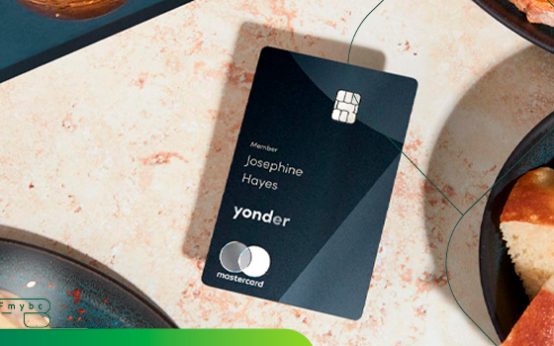
The HSBC Student Credit Card is often advertised as a simple add-on to the HSBC Student Bank Account. But for many students, its real value lies in the ability to establish financial credibility early while enjoying built-in protections. This page goes beyond the basics, offering practical guidance, hidden strategies, and comparisons that rarely appear in standard reviews.
Step-by-Step Guide to Using the HSBC Student Credit Card
1. Application and Approval
- Eligibility: Must hold or open an HSBC Student Current Account, be at least 18 years old, and reside in the UK.
- Credit checks: HSBC typically considers the maintenance loan as proof of income, making approval easier for full-time students.
- Limit allocation: Initial credit limit is usually £250–£500. Over time, consistent repayment may allow increases.
2. Responsible Daily Use
- Always set up a Direct Debit for full balance repayment to avoid interest charges.
- Use the card for planned purchases (e.g., travel tickets, laptops) rather than impulse spending.
- Keep utilisation below 30% of the limit (£150 on a £500 limit) to improve credit scores.
3. Interest-Free Period
- Up to 56 days interest-free if the balance is cleared monthly.
- Missing a payment not only triggers charges but also damages credit records — crucial when students later apply for car finance, rental contracts, or mortgages.
Advanced Tips and Hacks Few Students Know
- Leverage Section 75 for online protection
Buy your next £400 laptop with the HSBC card, and if the retailer fails to deliver, HSBC is legally liable to refund under the Consumer Credit Act 1974. - Pair with Wise or Monzo for travel
Since HSBC charges 2.99% non-sterling transaction fees, students can link their Wise or Monzo accounts for foreign travel, using the HSBC card only for Section 75–protected purchases abroad. - Credit score boosting
Regular use of less than £100/month with prompt repayments can lift a student’s Experian score by over 50 points within six months, based on anecdotal reports from UK finance forums. - Emergency replacement services
HSBC provides global card replacement, an overlooked feature useful for students on study-abroad programs. - Use cashback apps alongside the card
Linking the HSBC card to apps like TopCashback or Quidco doubles the benefit: cashback earnings plus credit score growth.
How to Maximise Value Over Time
- First year: Focus on building trust by repaying in full.
- Second year: Use for larger transactions (e.g., flights to Erasmus destinations), maximising Section 75 protection.
- Final year: By graduation, a strong repayment history often makes students eligible for premium products like the HSBC Classic Credit Card or even low-APR graduate loans.
Common Mistakes Students Should Avoid
- Using the card for cash withdrawals – incurs higher APR and immediate interest.
- Treating the £500 limit as “extra money” – this is borrowed credit, not income.
- Ignoring overseas fees – frequent travellers may end up paying unnecessary charges.
- Missing even one monthly payment – this leaves a permanent mark on your credit file for up to six years.
Frequently Asked Questions

Does the maintenance loan count as income for eligibility?
Yes, HSBC often considers Student Finance maintenance loans as acceptable proof of income during the application process.
Can I request a higher credit limit after six months?
It’s possible, but increases are modest and depend on repayment history and overall account behaviour.
Is this card good for international students?
Only if they open a UK-based HSBC Student Account. However, foreign transaction fees make it less attractive for frequent overseas spending.
What happens if I lose the card abroad?
HSBC offers 24/7 global support and can issue emergency replacements, even delivering to overseas addresses.
Can the card be linked to Apple Pay and Google Pay?
Yes, it can be added for contactless transactions, giving students flexibility and extra security layers.
Alternatives and Complementary Options
NatWest Student Credit Card
- Similar APR (18.9%), no annual fee.
- Best suited for existing NatWest student account holders.
TSB Student Credit Card
- Slightly higher APR at 19.9%.
- Approval is easier if you already hold a TSB Student Current Account.
AIB (GB) Student Card
- Lower APR (13.9%) makes it attractive for those who might carry a balance occasionally.
Student Overdrafts
- Many UK banks offer overdrafts up to £1,500 interest-free.
- Useful as a flexible borrowing tool, but not effective for credit history building.
Debit Cards for Travel (Wise, Monzo, Revolut)
- Ideal for avoiding foreign transaction fees.
- Complement the HSBC Student Credit Card rather than replace it.
Practical Case Study
Consider Sophie, a second-year law student in Manchester. She uses her HSBC Student Credit Card only for train tickets and a Spotify subscription. By setting up a Direct Debit to clear the balance monthly, her Experian score rose from 545 to 612 in less than a year. When she applied for a private rental flat, the landlord approved instantly because of her improved credit profile. This small but consistent use gave her a tangible real-world advantage.
Should You Get It?
The HSBC Student Credit Card is not designed for high spending, cashback hunters, or frequent travellers. Instead, it’s an excellent credit-building tool with purchase protection that integrates seamlessly into HSBC’s student ecosystem.
Students who understand its limitations — modest limit, foreign fees — will extract the most value by pairing it with travel debit solutions and avoiding cash withdrawals.



 118 118 Money Card: Full Usage Guide, Tips & Real Value <p style='font-size:14px;'>More Than Just Credit Repair: How 118 118 Money Card Fits Real UK Lifestyles</p>
118 118 Money Card: Full Usage Guide, Tips & Real Value <p style='font-size:14px;'>More Than Just Credit Repair: How 118 118 Money Card Fits Real UK Lifestyles</p>  YONDER CREDIT CARD: THE COMPLETE OPTIMIZATION GUIDE <p style='font-size:14px;'>Everything you need to extract maximum value from the UK's most experience-focused card</p>
YONDER CREDIT CARD: THE COMPLETE OPTIMIZATION GUIDE <p style='font-size:14px;'>Everything you need to extract maximum value from the UK's most experience-focused card</p>  How to Use the Amex Gold Card for Maximum Value in 2025 <p style='font-size:14px;'>Advanced Strategies to Maximise Amex Gold UK: Points, Perks & Lounge Access</p>
How to Use the Amex Gold Card for Maximum Value in 2025 <p style='font-size:14px;'>Advanced Strategies to Maximise Amex Gold UK: Points, Perks & Lounge Access</p>